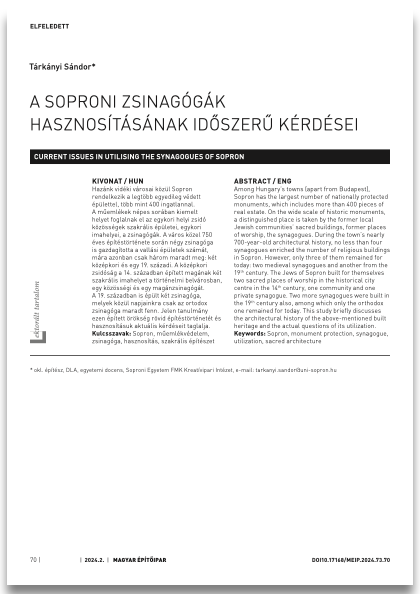CURRENT ISSUES IN UTILISING THE SYNAGOGUES OF SOPRON
DOI:
https://doi.org/10.17168/Keywords:
Sopron, monument protection, synagogue, utilization, sacred architectureAbstract
Among Hungary’s towns (apart from Budapest), Sopron has the largest number of nationally protected monuments, which includes more than 400 pieces of real estate. On the wide scale of historic monuments, a distinguished place is taken by the former local Jewish communities’ sacred buildings, former places of worship, the synagogues. During the town’s nearly 700-year-old architectural history, no less than four synagogues enriched the number of religious buildings in Sopron. However, only three of them remained for today: two medieval synagogues and another from the 19th century. The Jews of Sopron built for themselves two sacred places of worship in the historical city centre in the 14th century, one community and one private synagogue. Two more synagogues were built in the 19th century also, among which only the orthodox one remained for today. This study briefly discusses the architectural history of the above-mentioned built heritage and the actual questions of its utilization.


